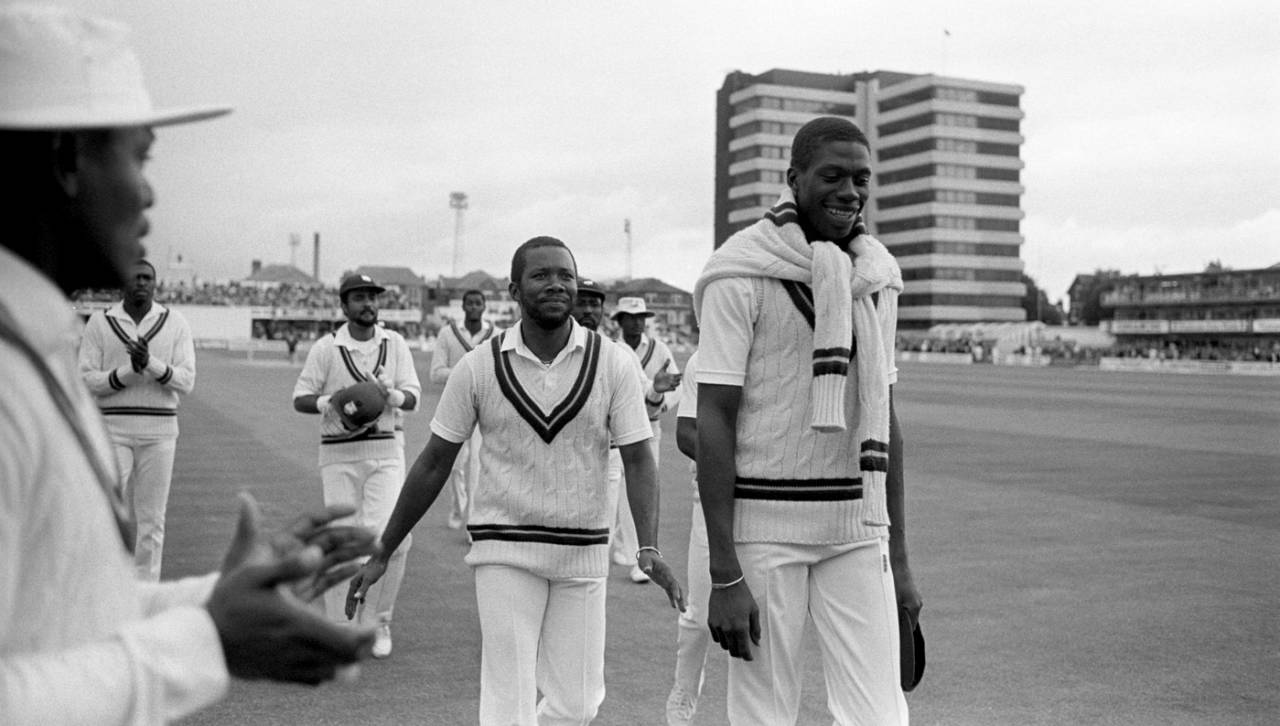A few years ago, Patrick Ferriday and Dave Wilson took it upon themselves to rank the 100 greatest Test hundreds. It was
a meticulous and exhaustive exercise, one that provoked much debate. More importantly, whatever your view on matters ordinal, it was a collection of fine writing on some unarguably great batting. Now they have laboured lovingly over a follow-up,
Supreme Bowling: 100 Great Test Performances, and the discussions can begin again.
As with Masterly Batting, the original book, this is an immensely thorough and (as least as far as possible) scientific attempt to list cricket's best Test-match bowling. Ferriday sets out the methodology in the opening section, taking into account seven key factors, such as wickets/runs (converted into "relative value"), opposition, conditions, and match and series impact. Of these, match impact is considered the most important - reflective of the adage that it is bowlers who win games - which is a notable tweak from the Masterly Batting formula, where the conditions and opposing attack took on greater significance.
The cut-off point is a five-for, of which there had been almost 2800 in Tests up to the start of 2016 (the book's other cut-off point, meaning Stuart Broad's 6 for 17 in Johannesburg misses out). Quite a bit of sifting required, then. If magnitude is all you are after,
that list already exists; in
Supreme Bowling, Jim Laker is brought down to size - though "the calm destroyer" still takes his place in the pantheon.
Once again, the Ferriday-Wilson ranking system is largely dispassionate. Lots of numbers are punched in - including, for instance, a precisely calibrated measure of each wicket's worth using historical ICC batting ratings - and out burp the results. There is a category for "intangibles", which takes into account first-hand reportage, but the attempt is to be as objective as possible. The authors, of course, know they won't be able to please everybody, noting in their introduction the reaction to Masterly Batting: "almost every innings in the 100 was considered either too high, too low or a foolish inclusion and many outside the 100 were denounced as absurd omissions".
From which quarters will the brickbats come this time? Shane Warne's boosters will doubtless contest the suggestion that only one of his 37 five-wicket hauls merits inclusion - especially when Phil Tufnell gets in twice. Malcolm Marshall, Wasim Akram, Abdul Qadir and Dennis Lillee, meanwhile, are among the illustrious names who fail to make the grade. (Akram and James Anderson are the only bowlers with 400-plus Test wickets not to feature.)
However, it's worth noting that the Wisden 100, which was compiled in 2001, came to similar conclusions: Marshall, Wasim and Lillee were again absent, while Warne's only entry was for his 8 for 71 against England in 1994-95 (in Supreme Bowling it is his 6 for 34 versus South Africa three years later). Perhaps sweeping up Poms by the bagful isn't necessarily the stuff of greatness.
Both lists find agreement on the apex bowling performance in Tests too. Hugh Tayfield, the South Africa offspinner, is perhaps not as feted many of the names that come after him but he is one of only four players to have three or more entries in the Supreme 100 (Kapil Dev, Muttiah Muralitharan and Mitchell Johnson are the others). Of the big beasts, only Curtly Ambrose manages two appearances in the top ten.
But all this is really parlour talk before sitting down to enjoy the banquet. The great strength of the book - as was the case with its predecessor - is the quality of the writing, in particular the "Pinnacle" section, which covers performances 25 to 1 and takes up two-thirds of the 300-odd pages. Ferriday and Wilson can call upon an all-star attack themselves: Rob Smyth channels Ezekiel 25:17 (and Pulp Fiction's Jules Winnfield) to describe Ambrose as he "struck down upon England with great vengeance and furious anger" at Port-of-Spain in 1994; Dileep Premachandran relates Harbhajan Singh's turbanating of Australia in Chennai days after the "Miracle of Eden" - a far preferable destiny to driving long-haul trucks in Canada; and Russell Jackson summons some appropriately muscular prose for Johnson: "The He-Man fitness freak with the Hell's Angels moustache said 'bollocks' to self-preservation and 'up yours' to workload management."
A particular favourite of mine was Rob Bagchi's beautifully evocative piece on Sarfraz Nawaz - Pakistan's swing-bowling "dandy" - which manages to reference Keyser Soze, Omar Sharif and Marlies Gohr while retelling the story of his match-stealing 9 for 86 at the MCG in 1979. Then there is Richard Hadlee and his "talking ball" at the Gabba, not to mention the Dylan-infused folk tribute to Bob Willis in 1981… I could go on.
If the concept is a touch High Fidelity, the resulting collection is high quality. There should be no need for argument about that.
Supreme Bowling
Compiled and edited by Patrick Ferriday and Dave Wilson
Von Krumm Publishing, 2016
321 pages, £15 (Kindle edition £4.91)
Alan Gardner is an assistant editor at ESPNcricinfo. @alanroderick

